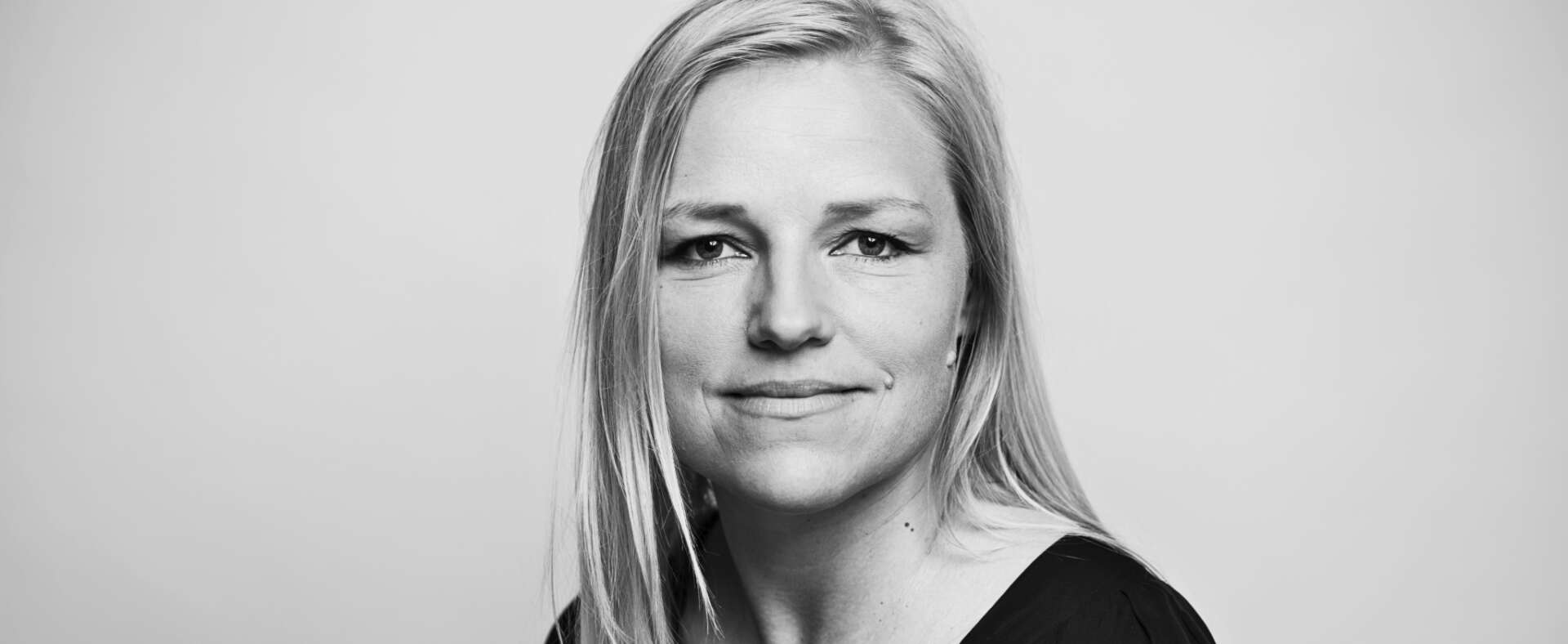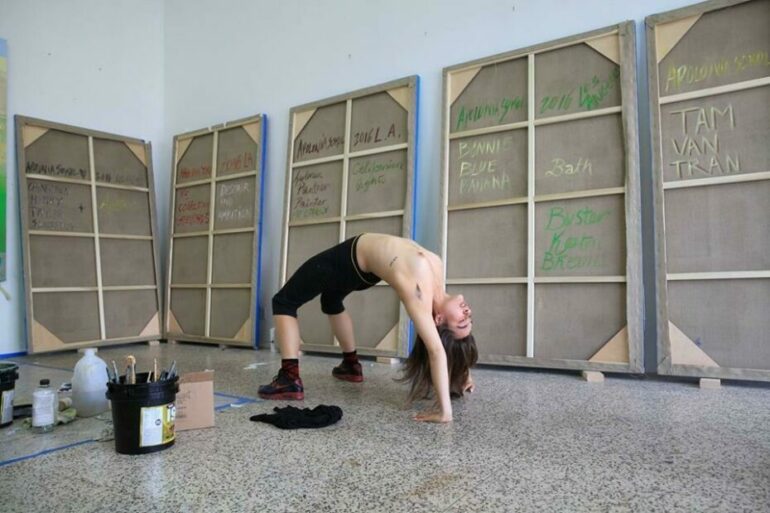
Exclusive: Ane Mandrup discusses the Danish Film Institute’s vision to strengthen the documentary sector challenged by Covid-19 and the new financing and distribution models.
Flee might be one of the hottest Oscar docs contenders and a flagship example of Danish documentary excellence, but the sector is suffering from under-financing. Partly to blame are pubcasters’ lack of commitment in early stages of production, says Mandrup who produced numerous films (including Christoffer Guldbrandsen’s The President, Christina Rosendahl’s fiction film The Idealist) before joining the DFI, first as Head of Development-short and docs in 2012, and Head of Documentaries since 2015. Mandrup also sits on the Board of Nordisk Film & TV Fond.
Firstly, could you explain your remit, the number of documentaries - across formats - you support each year and overall funding you work with across your various support initiatives?
Ane Mandrup: We support around 30 documentaries a year and 5 short fiction formats - mainly for children and youth. Our overall budget across development, production, co-production and eventually marketing support, is around €6.6 million per year.
Has your funding remained stable?
AM: Yes. It is our minimum budget. But for instance this year, we had almost €1 million extra, channelled through our department. We do have a very strong budget for documentaries.
Are you satisfied with the support you were able to provide the doc sector during the pandemic?
AM: The DFI received some extra funds from our government, but compared to Sweden for example, it hasn’t been nearly as significant. I’m really pleased that we were able to continue working, providing funding, and that we could be flexible when it comes to reporting, deadlines etc. But I wish we could have offered substantial financial support to all documentaries in production and to the production companies, as they did in Sweden.
At the DFI, we’ve noticed that the documentary sector has been hit harder during the pandemic than the fiction sector. During the lockdown, the feature film industry was also impacted, yet they managed to reboot and adapt, with safe filming guidelines and Covid-19 protocols in place. Also, they were able to focus on script development.
It’s just different with documentaries. Projects are being researched, developed, written with the camera, on sight, out in the real world. But if you can’t travel, go to locations due to Covid, you are stuck. Although the doc industry is used to being flexible and adjusting on the fly, still, it’s been difficult. Many projects were in standstill for half a year, some even for a year and a half. It’s taken a toll on the industry.
Have you had bankruptcies?
AM: No, which is impressive. That said, we’ve had less applications for co-production support compared to last year. This is because it’s been impossible for producers to develop their projects properly and to show filmed material, a pilot, or scenes, to do the financing. At Nordisk Film & TV Fond, for the first three quarters of the year, only half of the budget for documentaries was spent. Fewer projects were able to apply for support, as you need broadcasters on board to apply for top-up financing. It’s now that we can see the effects of the pandemic.
Would you say that the pandemic has crystallised existing problems inherent to the financing of documentaries?
AM: Absolutely. A few years back, when I was working as a producer, it was possible to get Nordic and EU broadcasters on board in the development stage. Over the last five years, it’s been increasingly hard to get broadcasters to commit at an early stage. Now they mostly commit just before or during production, and more often upon seeing a rough cut. This is one important reason why we’re seeing a decrease in application for top-up financing.
The issue of public broadcasters’ support - too little too late according to producers - was discussed at your recent DOK 2021 industry meeting, but I guess this relates to their obligations as stated in the 2019-2023 Media Agreement…
AM: Yes in the previous Media Agreement, TV stations were supposed to support a certain number of films a year and had funding obligations as well. In the current Agreement, they have volume obligations, but broadcasters are allowed to contribute based on ‘market value’. The question is what is market value in a heavily-subsidised environment? Since 2019, TV stations have effectively reduced their contributions to documentaries as a whole, and in particular during development, which is regrettable. But this is a trend all over the Nordic region and in Europe.
Still there are some positive initiatives such as EBU members’ intention to pool their resources to create 5 big docs a year…
AM: We do welcome any kind of collaboration and initiative to pool resources and support the industry.
How has the DFI adapted to the streaming era and what measures have you taken to support the industry at a time when the traditional public-based support system is trying to redefine itself?
AM: In these challenging times, we’ve noticed like everyone else, that competition has exploded. Against the exponential volume of content, available 24/7, we feel there is a growing need to engage with the audience and impact them, in their terms and available time. Filmmakers themselves have expressed a wish to engage in new ways with the audience.
We’ve also identified a greater need to focus on film beyond entertainment - as a cultural vehicle. Therefore in 2019, we’ve launched an ‘anthropological deep dive’ into the industry, collaborating with anthropologists. We’ve asked for instance what insight do creatives have in the development phase about the audience? What is their understanding of marketing terms such as positioning, audience engagement?
We had three workshops with the industry - scriptwriters, directors, producers, distributors, PR agents - and in-depth interviews with stake holders, followed by recommendations and action points.
One of the concrete actions was the launch in 2020 of a new funding scheme: ‘Publikums Fokus’ or ‘Audience Focus’. It’s running parallel to our development and production support. During the development phase, if people want to research new ways of working around reaching audiences’ differently, we can fund this. It’s one way of working strategically with the new market conditions.
It’s very much what NRK did with Skam - their success was based on thorough research among young viewers…
AM: Exactly! We also do audience interdisciplinary workshops on projects in development or in production. Then we will launch on our website a new section called ‘Viden om publikum (or ‘Know your Audience’). We feel there is a lot of audience knowledge at the DFI and in the industry that is not circulating properly. We have therefore worked intensively over the last year, to ‘democratise’ that knowledge and make it available.
Have you also adapted your support guidelines to the streaming environment?
AM: We are very flexible regarding streaming partners. To apply for funding, projects still need to have a local producer, a filmmaker with an original vision, holding the final cut and a production company keeping the rights to their film. That said, producers can easily team up with streamers for financing or distribution. We see ourselves as a risk-taking partner. We focus especially on development support to lift the projects and directors’ vision, but if producers decide to go to a major streamer to fully-finance a project, they can, and don’t even have to reimburse our development funding. We’re just happy for any strong distribution partner to board a project.
On the creative side, films like Skál, Our Memory Belongs to Us, President, Flee have won major awards, and the series Absolute Beginners just picked up a Prix Europa. How important are these international kudos to very different films?
AM: It’s essential for filmmakers. It’s a key recognition of their talent and vision, and hopefully this can ease the financing of their next project. It’s also important for our government. In our Film Agreement, we are meant to have 10-12 docs on A-list festivals each year, and we’re pleased that our industry has no problem reaching that goal.
Do you see any creative trends in Danish doc filmmaking?
AM: We have strong talents in Denmark across generations. Many are making character-driven documentaries and there are strong international collaborations, both financially and creatively. All are nurturing and inspiring each other.
Do you receive more applications for Doc TV series?
AM: Scandinavian Star and The Mole, have been paving the way to more TV series at DR. TV2 has for many years supported doc series through our Public Service Fund. We’ve always been able to support TV series and during our industry meetings, we have often pointed out that we’d like more series. We are eager for creatives to explore all formats that best support their vision.
On a Nordic level, where do you see room for improvement?
AM: I’m a huge fan of Nordic collaboration and strong supporter of Nordisk Film & TV Fond and Nordisk Panorama. This is an essential place for the industry to develop projects together financially, creatively, and for producers/talents to meet new partners. There is a genuine Nordic spirit of collaboration at Nordisk Panorama.
One challenge going ahead, is Nordic distribution, both as part of the financing, before a project reaches top-up financing, and when a film is finished, to help it cross borders.
What upcoming Danish docs can we look forward to watching in 2022?
AM: Among the projects that have also received support from Nordisk Film & TV Fond, I would watch out for: A House Made of Splinters by Simon Lereng Wilmont, produced by Final Cut for Real, and Apolonia, Apolonia by Lea Glob, produced by Danish Documentary.
